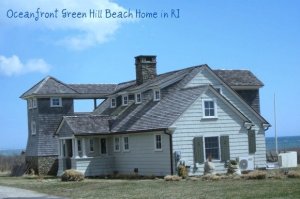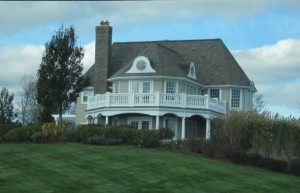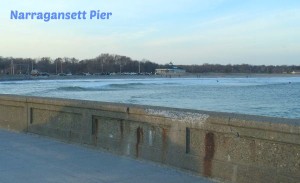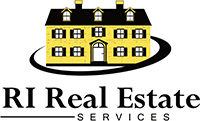Septic Requirements in the Southern Rhode Island
Critical Resource Areas
The RI Department of Environmental Management (DEM) has issued new regulations for septic systems that are either new systems or repaired systems in the Rhode Island Critical Resource areas.  RIDEM has defined these areas in southern RI in the Salt Pond and Narrow River areas yet all salt ponds in southern RI are impacted. This is must know information any homeowner in North Kingstown, South Kingstown, Narragansett and Westerly should know about that is not on sewers. Although it may not be critical to your home ownership now, it will be when you sell your home.
RIDEM has defined these areas in southern RI in the Salt Pond and Narrow River areas yet all salt ponds in southern RI are impacted. This is must know information any homeowner in North Kingstown, South Kingstown, Narragansett and Westerly should know about that is not on sewers. Although it may not be critical to your home ownership now, it will be when you sell your home.
 RIDEM has defined these areas in southern RI in the Salt Pond and Narrow River areas yet all salt ponds in southern RI are impacted. This is must know information any homeowner in North Kingstown, South Kingstown, Narragansett and Westerly should know about that is not on sewers. Although it may not be critical to your home ownership now, it will be when you sell your home.
RIDEM has defined these areas in southern RI in the Salt Pond and Narrow River areas yet all salt ponds in southern RI are impacted. This is must know information any homeowner in North Kingstown, South Kingstown, Narragansett and Westerly should know about that is not on sewers. Although it may not be critical to your home ownership now, it will be when you sell your home.What is a Rhode Island Critical Resource Area?
It all has to do with RI coastal real estate water and I am sure you know that RI has over 400 miles of coastline, lakes, streams and ponds that fall into a ‘water protection’ area. Protecting these critical resource watershed areas are essential to the DEM (department of environmental management) as the watchdogs of our essential waters. Ensuring that the groundwater that leaches into these protective bodies of water is not tainted is important to our natural environment. This means that septic systems must comply with the new regulations when they fail to operate to DEM standards.
The Salt Pond and Narrow River watershed areas are considered critical resource areas in Rhode Island. Therefore, there are huge neighborhood housing areas that fall into these areas from Westerly to North Kingstown. These critical resource areas have changed in 2014 and impact anyone who owns real estate with a septic (onsite wastewater treatment system – OWTS) within these boundaries. Are you in one of the critical areas? You must find out since it does impact your waste water treatment system going forward.
Here is an explanation from Jon Swarg of RI DEM:
“In broader terms, the Critical Resource Area is the watershed area of the Salt Ponds and the Narrow River, meaning that rainwater falling within this area eventually finds its way into one of the salt ponds or into the Narrow River. Septic systems within this area discharge to the groundwater that also eventually moves into the same waterbodies. Systems in the Critical Resource Areas are required to use advanced technologies to reduce the amount of nitrogen in the wastewater by 50% or more. Excess nitrogen harms water quality and, in groundwater, is a drinking water contaminant.” Jon Zwarg, Senior Environmental Scientist, RI Department of Environmental Management.

OWTS Changes to Know in RI Critical Resource Areas
If you have a failed septic system, cesspool, you or the new homeowner are required upon selling your home to upgrade your system to a denitrification system (nitrogen reducing technology system) in these areas. These high end septic purification systems usually run upwards of $25,000+ for engineering and install. Approved RI DEM septic installers are listed on RI DEM’s web site or on your RI town’s web site.
If you have vacant land or buying a parcel of land in this critical resource area, you are required on all OWTS septic applications to install a denitrification system. If you are doing an ‘alteration’ to your OWTS system due to a home expansion (additional bedrooms) or are doing a repair of a system that includes leachfield expansion or replacement in the Salt Pond and Narrow River critical resource areas, the denitrification system applies here too. RI DEM is especially helpful for any questions you may have on your location and whether or not you are definitely in this area.
My strong suggestion is that you do not listen to your neighbor, real estate agent or other ‘known’ friend on this subject but talk to RIDEM or a local septic designer/installer to find out the skinny on whether you may be impacted by these changes. Although as a luxury and coastal RI real estate agent I stay on top of the latest DEM requirements for my clients, it is always up to the homeowner or home buyer to do their own due diligence on this subject.

Application for OWTS Repairs in RI Critical Resource Areas
Not all repairs require this upgrade to a denitrification system so do not panic. OWTS applications for repair that include expansion of a septic system (adding a bedroom), replacement of the system or leach field changes ALL require a denitrification system in these critical areas.
However, any repair to the OWTS system that includes the sewer, distribution box or septic tank does not necessarily mean an upgrade to a denitrification system. These repairs must show that the leach field has not failed inspection based upon the ten criteria DEM classifies under OWTS Rule 7 on failed OWTS. It is best that you talk to a licensed septic company to inspect and determine where your system is at (fail or pass). If any of these 10 criteria are not met, a denitrification system is required.
In the Critical Resource Area, any cesspool replacement must be a nitrogen reducing OWTS system. This is RI state mandated. Contact Jon Zwarg at jonathan.zwarg@dem.ri.gov or 222-4700 ext. 7205 with questions regarding septic changes both proposed or existing. As of 2015, he is the RI Department of Environmental Management’s point person.
If you thought you could use any RI real estate agent to help you do your due diligence when buying a home, you are mistaken. Any home buyer should be working with an agent who has experience and knowledge in flood plains and septic changes. Finding out after you buy a home where you chose not to upgrade your septic system in a critical resource area will cost you more money eventually. Knowing how to successfully navigate negotiations and research in this home buying environment of RI takes experience and know how. Ensure you make the right choice.
Working successfully with home sellers and buyers to ensure their monies are invested in the right properties is what I do everyday in southern RI real estate. When you are ready, able to buy or sell real estate, call me at 401.529.7849 or email me at ginny@RiHouseHunt.com.
Septic Requirements in the Southern Rhode Island Critical Resource Areas
~~~~~~~~~~~~~~~~~~~~~
Ginny Lacey Gorman is your go to Rhode Island waterfront and luxury real estate agent for southern RI real estate and beyond…knowing the geographic area, schools, happenings and important tidbits of local information. Email her at Ginny@RiHouseHunt.com to make an appointment to discuss your real estate needs.
Waterfront, oceanfront, luxury and coastal Rhode Island real estate are my specialty but all of RI is my backyard. When you are in need of a real estate professional and specialist for your buying, selling or relocating needs and an internet savvy marketer who sells RI houses in this real estate market, call Ginny Gorman at 401.529.7849 today.




Thanks for posting this information! It’s interesting how critical resource areas affect how septic systems are built. I agree, it seems like regulations for septic system to meet DEM standards would be necessary to make sure that they don’t cause groundwater to leach into protective bodies of water. Does that mean that maintenance would be different for anyone who owns a house with a septic system in a critical resource area? I imagine that it would require more maintenance to make sure that the water isn’t tainted.
If you are familiar with denitrification systems, they are monitored remotely and checked twice a year. Very high tech systems in Critical Resource Areas and any area with a designated high water table. thanks.